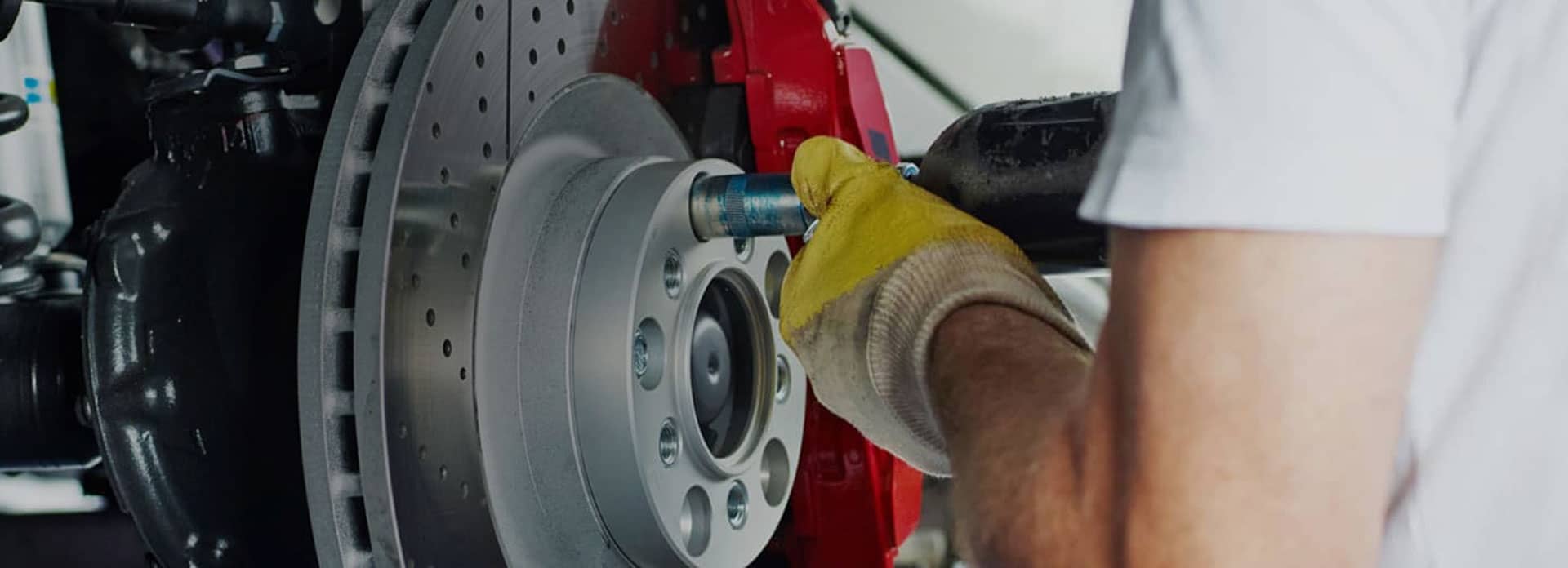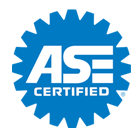The Edible Engine
Posted October 27, 2019 8:46 AMYou may have had a friend whose vehicle was the victim of hungry rodents. After all, mice, rats and squirrels—even rabbits—have been known to gnaw on wires in engine compartments, causing vehicle electrical systems to go haywire. They can disable a vehicle completely and be very expensive to fix.
In 2017, some drivers noticed their vehicle's wiring was being chewed and found out the automaker was using a relatively new material for covering their wires: soy. Many of the repairs to their new vehicles weren't covered under warranty by the manufacturer when it was discovered rodents were eating the wiring. So the owners filed a class action suit, saying the soy covering was essentially baiting the critters.
The automakers tell a different story, saying mice, rats and squirrels have been chewing through wire insulation long before it was made out of soy.
Regardless of what the insulation is made of, vehicle owners should make sure rodents aren't chowing down and creating a problem in the engine compartment. They can have their repair facility check for these signs: Little bits of acorns, leaves, chewed up plastic and animal droppings in the engine's nooks and crannies. Using a black light, your technician can detect animal urine, a sure sign that they've been using your engine compartment as a warm apartment, a nest and a dining room.
You can take steps to prevent rodents from chomping your vehicle's parts. Honda—one of the vehicle manufacturers that uses soy-based wiring covering—makes a rodent tape. It contains a spice called capsaicin that rodents find too hot to handle. Other preventative measures include installing metal mesh around wiring harnesses or spraying the engine compartment with special rodent-repellants.
Rodent damage can cost one vehicle owner thousands of dollars to fix, not the kind of bite anyone wants taken out of their bank account.
A.G. Automotive & Diagnosis
19735 Sherman Way Suite 2
Winnetka, CA 91306
(818) 438-9608
Keep Your Tires Well Rounded in Winnetka: Tire Rotation and Wheel Balancing at A.G. Automotive & Diagnosis
Posted October 20, 2019 9:10 AM
Taking care of our tires is part of vehicle care for Winnetka drivers. We know they have to be replaced when they wear out, but tires also require some preventive maintenance. This maintenance will improve and extend the life of the tires, so it's well worth the effort and expense for Winnetka drivers to get it done. Tire maintenance includes keeping tires properly inflated, rotating tires and balancing wheels.
The recommended tire pressure for a vehicle's tires is printed on a sticker on the inside of the driver's side doorjamb. A lot of engineering goes into calculating the correct pressure, so it's an important number for Winnetka vehicle owners to know. Not following this recommendation can throw off the suspension system and can lead to tire damage. Underinflated tires wear out more quickly than properly inflated tires. Vehicles also get better traction and handling on properly inflated tires. Check your tire pressure at least once a week and add air if necessary.
Don't be tempted to add a bit of extra air to your tires when you fill them. Overinflated tires will cause the center tread to wear unevenly because of improper contact with the road. It will also affect the handling performance of your vehicle.
Rotating tires allows all four tires on a vehicle to wear evenly. Front tires get more wear than rear tires because they do most of the work on turns. Tire rotation allows all of the tires to spend time on the front of the car so they all experience the extra wear.
For most vehicles, tire rotation is simply a matter of moving the front tires to the rear and vice versa. Some vehicles, however, recommend a cross-rotational pattern. Other vehicles use asymmetrical tires, which means the right tires have to stay on the right side of the vehicle and the left tires on the left. Some vehicles use differently sized wheels on the front and back of the car and should not have their tires rotated.
What kind of rotation do you need? Check your owner's manual or talk to your service advisor at A.G. Automotive & Diagnosis. Your owner's manual will have information about how to rotate your vehicle's tires as well as letting you know how often you should get it done. For most vehicles, that's usually every 5,000 miles or 8,000 kilometers Your friendly and knowledgeable A.G. Automotive & Diagnosis professionals can also offer auto advice about tire rotation. A quick tire inspection can also indicate whether or not your tires are due to be rotated.
When it comes to tire maintenance for Winnetka drivers, wheel balancing is usually what we know least about. Balancing a wheel is necessary to keep it in constant contact with the road. If a tire is not balanced properly, it actually hops along the roadway. You can feel this hopping as a vibration in your steering wheel if the unbalanced tire is a front tire. You'll feel the vibration through your seat if a rear tire is unbalance. Properly balancing your tires is important and will extend their life span, improve handling and improve the safety of your vehicle. When you replace your tires, the new tires need to be balanced.
Never use different sized tires on the same axle of a vehicle. In other words, your front tires need to be the same size and your rear tires need to be the same size. Mixing sizes can lead to some serious handling problems for Winnetka drivers.
If you have an all-wheel drive or four-wheel drive vehicle, all four tires need to be the same size. If your tires are wearing out, you can sometimes make a new tire purchase fit within your budget by only buying two tires at a time. When you do this, the new tires should be installed on the rear of the vehicle. Rear tires are more in need of the traction than your front tires to avoid spinning out on slippery surfaces. If you drive a vehicle around Winnetka, you need tires, so you need to know how to care for them. The safety of your vehicle can depend on the condition of your tires.
A.G. Automotive & Diagnosis
19735 Sherman Way Suite 2
Winnetka, CA 91306
(818) 438-9608
http://www.agautodiagnosis.com
Fuel Saving Tip: Alignment for Your Winnetka Vehicle
Posted October 13, 2019 8:42 AM
Imagine you've left Winnetka and you're up in the arctic on a dog sled.
Your dog team is pulling straight and true. You can cover a lot of ground quickly. Now imagine what would happen if one or two of the dogs wanted to go their own way and were pulling off to the side.
That would slow you down. You would have to work harder to keep the sled going where you want it. The dogs are all working as hard as before, but you're covering less ground for the same effort.
You're wasting kibble.
The same is true of your vehicle when the wheels are out of alignment. That wheel that's pulling to the side is dragging down the rest of the vehicle; so you push a little harder on the gas pedal to keep up your speed. You're wasting gas.
So have your wheel alignment checked at least once a year. It is important to get it checked right away if you feel the vehicle pulling to one side.
Sometimes we Winnetka residents bump a curb or hit a pothole and knock our wheels out of alignment. An accident can take the wheels out of alignment as well.
Winnetka residents need to make sure they're tracking straight. You'll get better fuel economy and your tires'll last longer. Now, mush!
A.G. Automotive & Diagnosis
19735 Sherman Way Suite 2
Winnetka, CA 91306
(818) 438-9608
http://www.agautodiagnosis.com
How Your Check Engine Light Works
Posted October 6, 2019 9:56 AM
Have you ever had an experience like this in Winnetka, CA? You drive through the one of those automatic car washes. When you get to the end, where the dryer is blowing, your Check Engine light starts flashing!
You fear the worst, but within a block or two, the light stops flashing, but stays on. By the next day, the light is off.
You wonder; "What was going on?" Well, it's actually a good lesson in how the Check Engine light works.
Your air intake system has a sensor that measures how much air is coming through it. When you went under the high-speed dryer, all that air was blasting past the sensor. Your engine computer was saying, there shouldn't be that much air when the engine is just idling. Something's wrong. Whatever's wrong could cause some serious engine damage.
Warning, warning! It flashes the Check Engine light to alert you to take immediate action.
It stopped flashing because once you were out from under the dryer, the airflow returned to normal. Now the engine control computer says the danger is past, but I'm still concerned, I'll keep this light on for now.
Then the Check Engine light goes off in a day or two.
The condition never did recur, so the computer says whatever it was, it's gone now. The danger is past, I'll turn that light off.
Now a flashing Check Engine light is serious. You need to get it into A.G. Automotive & Diagnosis as soon as possible. But if it stops flashing you can wait a few days, so you have time to see if the problem will clear itself or if you need to get it checked. How does the computer know when to clear itself?
Think of it this way. The engine control computer is the brain that can make adjustments to manage the engine. Things like alter the air-to- fuel mix, spark advance and so on. The computer relies on a series of sensors to get the information it needs to make decisions on what to do.
The computer knows what readings are in a normal range for various conditions. Get out of range, and it logs a trouble code and lights up the Check Engine warning.
The computer will then try to make adjustments if it can. If the computer can't compensate for the problem, the Check Engine light stays on.
The computer logs a trouble code. Some people think the code will tell the technician exactly what's wrong.
Actually, the code will tell the technician what sensor reading is out of parameters. It can't really tell him why, because there could be any number of causes.
Let's say you're feeling hot. You get your heat sensor out – a thermometer – put it under our tongue and in a minute or two you learn that you have a fever of 104 degrees F (40 degrees C).
You know your symptom – a fever – but you don't know what's causing it. Is it the flu, a sinus infection or appendicitis?
You need more information than just that one sensor reading. But it does give you a place to start and narrows down the possible problems.
There are reports on the internet telling you that you can just go down to an auto parts store and get them to read your trouble code or buy a cheap scan tool to do it yourself.
There are two problems with that. First, the computer stores some trouble codes in short term memory and some in permanent memory. Each manufacturer's computer stores generic trouble codes, but they also store codes that are specific to their brand.
A cheap, generic scan tool, like you can buy online or that the auto parts store uses, doesn't have the ability to retrieve long-term storage or manufacturer specific codes. Your Winnetka, CA, service center has spent a lot of money on high-end scan tools and software to do a deep retrieval of information from your engine control computer.
The second problem is that once you've got the information, do you know what to do with it? For example, a very common trouble code comes up when the reading on the oxygen sensor is out of whack.
So the common solution is for the auto parts store to sell you a new oxygen sensor — which is not cheap — and send you off on your way. Now your oxygen sensor may indeed have been bad and needed replacing. But the error code could have come from any of a dozen of other problems.
How do you know the right solution? Back to the fever analogy, do you need surgery or an aspirin? Leave it to the pros at A.G. Automotive & Diagnosis. Give us a call and let us help you resolve your check engine light issue.
A.G. Automotive & Diagnosis
19735 Sherman Way Suite 2
Winnetka, CA 91306
(818) 438-9608
http://www.agautodiagnosis.com















